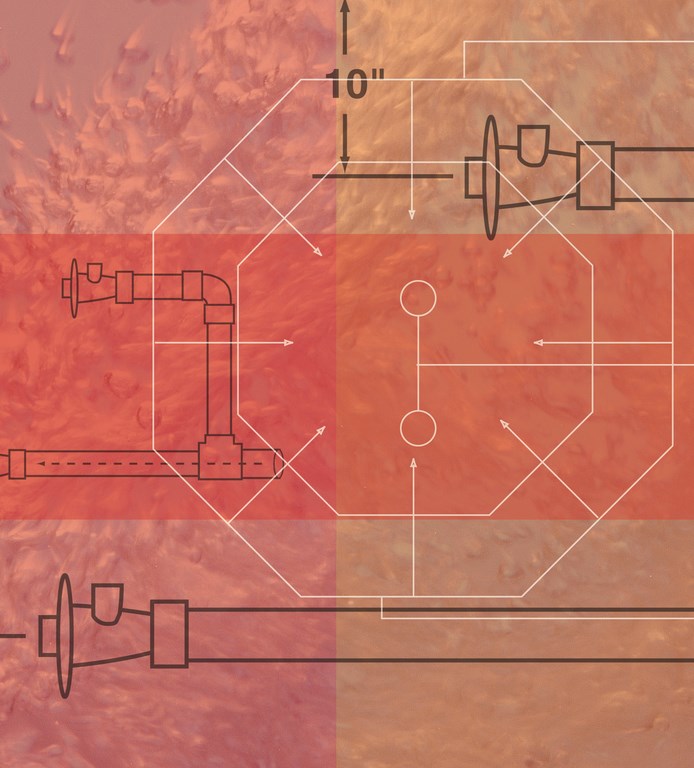The flow rate depends on what you’re trying to do. For simple filtration, about 15 to 20 gpm is plenty.
For a heater, you want at least 10 gpm per 100,000 btu/hr of heating. For example, a 400,000 Btu per hour heater requires at least 40 gpm.
For spa jets, you multiply the number jets by the manufacturer’s flow recommendations for the jets. For example, 5 jets at 25 gpm per jet is 125 gpm for good action.
For a spa spillover feature, it depends on the width of the spillover and how thick you want the sheet of water to be. Typical flow is between about 5 gpm per linear foot for weak action to 20 gpm per linear foot for good action.
The pump can get up to 175 gpm at full speed (3,450 rpm) as shown in the below brochure with the pump performance curve. Realistically, the flow should not be designed to go above 150 gpm.
The flow depends on the pump speed and the total head loss of the entire system, which includes the suction pipe and fittings, the filter, the heater, any other equipment and the pipes going back to the spa and the jet fittings.
For high flow designs, get a cartridge filter with about 400 to 500 square feet of surface area.
The heater will be the largest head loss. If the flow will go above about 80 gpm, I would recommend a check valve bypass that allows some water to go around the heater instead of going through it.
For pipe, you can figure out the head loss using charts or a calculator like below.
Friction head loss (<i>ft<sub>H2O</sub> per 100 ft pipe</i>) in water pipes can be estimated with the empirical Hazen-Williams equation.

www.engineeringtoolbox.com
The calculator will tell you the head loss and water velocity when you enter the pipe size, pipe length and flow in gpm.
Many pieces of equipment will include a head loss curve in the brochure or installation manual so that you can figure out the specific head loss for each piece of equipment.
For example, the head loss for a cartridge filter is shown in the manual on page 9 where it has a graph of the head loss vs. the flow rate. For example, the head loss at 140 gpm is 14 feet.
If you can’t find a head loss chart for a specific fitting or piece of equipment, you can ask the manufacturer and they should provide it.
Standard code for pool plumbing is a maximum of 6 feet per second for suction and 8 feet per second for return plumbing.
Most localities will require this and the builder should follow these design rules.



